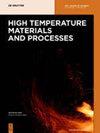基于vMF-WSAE动态深度学习的多模式转炉炼钢终点含碳量和温度软测量方法
IF 1.5
4区 材料科学
Q4 MATERIALS SCIENCE, MULTIDISCIPLINARY
引用次数: 2
摘要
摘要碱性氧气炉炼钢终点测定的难点在于实现碳含量和温度的精确实时测量。针对过程数据之间存在严重非线性的特点,深度学习可以对复杂结构数据进行良好的非线性特征表示。然而,转炉炼钢存在过程漂移现象,现有的基于深度学习的软传感器模型无法适应样品特性的变化,这可能导致其性能下降。针对这一问题,考虑到过程数据的多模分布特点,提出了一种基于von Mises-Fisher(vMF)混合模型和加权堆叠自动编码器的自适应更新深度学习模型。首先,针对复杂结构数据构建了堆叠式自动编码器(SAE)和vMF混合模型,该模型可以初步建立非线性映射关系和不同分布的划分。第二,对于每个查询样本,基础SAE网络将根据其相同分布的数据进行在线自适应微调,以实现动态更新。此外,根据每个样本与查询样本的相似性,为其分配一个权重。通过设计的加权损失函数,更新后的深度网络将更好地匹配查询样本的工作条件。通过数值算例和实际转炉炼钢过程数据的实验研究,验证了该方法的有效性。本文章由计算机程序翻译,如有差异,请以英文原文为准。
Soft sensor method of multimode BOF steelmaking endpoint carbon content and temperature based on vMF-WSAE dynamic deep learning
Abstract The difficulty of endpoint determination in basic oxygen furnace (BOF) steelmaking lies in achieving accurate real-time measurements of carbon content and temperature. For the characteristics of serious nonlinearity between process data, deep learning can perform excellent nonlinear feature representation for complex structural data. However, there is a process drift phenomenon in BOF steelmaking, and the existing deep learning-based soft sensor models cannot adapt to changes in the characteristics of samples, which may lead to their performance degradation. To deal with this problem, considering the characteristics of multimode distribution of process data, an adaptive updating deep learning model based on von-Mises Fisher (vMF) mixture model and weighted stacked autoencoder is proposed. First, the stacked autoencoder (SAE) and vMF mixture model are constructed for complex structural data, which can initially establish nonlinear mapping relationships and division of different distributions. Second, for each query sample, the basic SAE network will perform online adaptive fine-tuning according to its data with the same distribution to achieve dynamic updating. Moreover, each sample is assigned a weight according to its similarity with the query sample. Through the designed weighted loss function, the updated deep network will better match the working conditions of the query sample. Experimental studies with numerical examples and actual BOF steelmaking process data are provided to demonstrate the effectiveness of the proposed method.
求助全文
通过发布文献求助,成功后即可免费获取论文全文。
去求助
来源期刊

High Temperature Materials and Processes
工程技术-材料科学:综合
CiteScore
2.50
自引率
0.00%
发文量
42
审稿时长
3.9 months
期刊介绍:
High Temperature Materials and Processes offers an international publication forum for new ideas, insights and results related to high-temperature materials and processes in science and technology. The journal publishes original research papers and short communications addressing topics at the forefront of high-temperature materials research including processing of various materials at high temperatures. Occasionally, reviews of a specific topic are included. The journal also publishes special issues featuring ongoing research programs as well as symposia of high-temperature materials and processes, and other related research activities.
Emphasis is placed on the multi-disciplinary nature of high-temperature materials and processes for various materials in a variety of states. Such a nature of the journal will help readers who wish to become acquainted with related subjects by obtaining information of various aspects of high-temperature materials research. The increasing spread of information on these subjects will also help to shed light on relevant topics of high-temperature materials and processes outside of readers’ own core specialties.
 求助内容:
求助内容: 应助结果提醒方式:
应助结果提醒方式:


